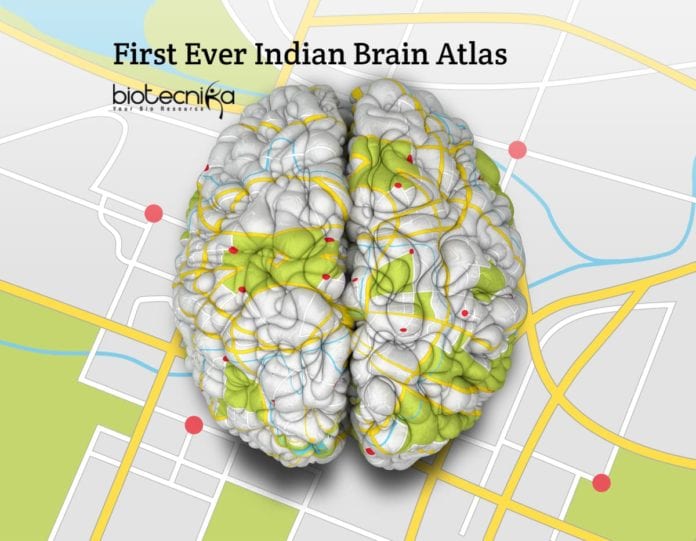Indian Brain Atlas by IIIT Hyderabad Researchers
The average Indian brain is much smaller in height, width, and also in volume as compared to the western and eastern populations like the Chinese & Korean according to the first-ever ‘Indian Brain Atlas’ created by scientists of the International Institute of Information Technology-Hyderabad (IIITH).
The differences of the Indian brain from other populations are found even at the structure level like the volume of the hippocampus and so on. But the overall ‘IBA 100 is more’ comparable to the Chinese & Korean atlases than the distant Caucasian one, according to the study team led by a professor from the Centre for Visual Information Technology Jayanthi Sivaswamy.
Construction of the First-ever Indian human brain atlas was done in collaboration with the Department of Imaging Sciences and Interventional Radiology, Sree Chitira Tirunal Institute for Medical Sciences & Technology, Thiruvananthapuram.
Montreal Neurological Institute (MNI) & International Consortium for Brain Mapping (ICBM) had created the first-ever digital human brain atlas in 1993 and had also released other brain atlases, widely used as a standard in the various neuroscience studies. However, these atlases and ‘standard’ brain templates were created using Caucasian brains. These are not ideal to analyze brain differences from other ethnicities such as the Indian population.
Medical images play a very big role in diagnosis and the idea of building our own first-ever Indian brain atlas came from a neuro-radiologist at the Sree Chitra Tirunal Institute, Trivandrum. He said that it is the MNI template that comes typically loaded in these MRI scanning machines, leaving them bereft of normative information, added Ms. Sivaswamy.
MRI images of the patients are compared with that of the pre-loaded MNI template to arrive at a diagnosis, and these templates are likely to lead to an incorrect diagnosis, she pointed out. While even Chinese & Korean brain templates had been constructed, there was no corresponding template constructed for our Indian-specific population.
IIITH research team made a maiden effort at creating an Indian-specific brain atlas involving 50 subjects selected across genders. MRI scans of these subjects’ brains were taken at three different hospitals across three different scanners to rule out variations found in scanning machines. After a successful pilot study, the research team recruited 100 willing participants in the construction of Indian Brain Atlas or ‘IBA 100’.
Scans collected were from an equal number of healthy male & female subjects 21-30 years age group when the brain is said to be ‘mature’. The constructed atlas was validated against the other atlases available for various populations.
She said that it was desirable to build a larger atlas with a greater heterogeneous mix of subjects to account for diversity, even in terms of educational qualifications. But currently, the team’s focus is to understand the aging process itself.
Many changes take place in a brain due to advancing age, with the most typical one being atrophy which means shrinking of structures as it happens in the case of conditions like dementia or Alzheimer’s, she said. Her student, Alphin Thottupattu is collecting MRI scans to create brain atlases for different age groups, like 20-30, 30-40, 40-50 & 50-60 and to track the brain and see how it ages over time.
With the number of aged persons increasing, there are more incidences of Alzheimers and Dementia. It is important to understand structurally what is normal too so that it is possible to catch such conditions early on, she added.






























